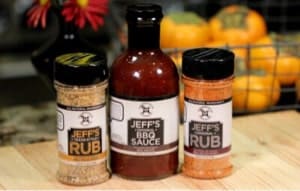- Aug 20, 2021
- 306
- 468
There are a number of good ways to smoke cheese, often in cold smokers or smokers modified to generate smoke (and heat) outside of the smoker. I’ve had some success using an unmodified WSM.
Picking a cold day, and using very, very little charcoal is critical to avoid melting the cheese. I shoot for a target smoker temperature of 80F, as many cheeses start to melt around 90F. On the day I did this smoke, it was 12F outside in the morning, warming only to 20F as I was finishing. This is not something I would try to do in warm weather.
For my latest smoke, I started with 2 lbs each of Jarlsberg, Dubliner, imported Gouda, and 48-month aged Cabot Cheddar, plus a pound of fresh Mozzarella, all from Costco.

I cut the big blocks in half to give more surface area; the wedges I cut in half crosswise, since lengthwise would give too much surface area on the narrow end of the wedge.
I filled the water pan with chilled water plus snow from the deck. The cold water helps keep the smoker temperature low.

To hold the charcoal, I cut a mini-fire ring from a 1 lb steel coffee can. I lit just enough briquets to cover the bottom of a charcoal chimney, and when they were ready, I transferred 5 briquets to the fire ring, topping with some of the smaller wood chunks leftover from a bag of apple chunks.

I assembled the smoker with all vents fully open. After 30 minutes the temperature had stabilized at 85F, and I added the grate holding the cheese blocks, and throttled all vents down to half, to keep internal temperatures low. .

I needed to add briquets twice during the cook, about two hours after lighting the first batch, and again 3.5 hours after lighting. To keep temperatures low, I added only two or three briquets each time, with a few pecan chips on top. I found that the briquets wouldn’t light reliably when put on top of the few existing coals, but I had good results lighting them individually with a propane torch before adding them to the coffee can ring. Temperatures in the smoker stayed between 70F and 90F throughout the smoke, though it did require paying attention in order to keep the temperature stabilized below 90F.

I took the mozarrella and the smaller chunk of each of the other cheeses off after 3 hours on smoke, and the larger blocks after 4 hours. All were wrapped tightly in plastic wrap and stored in the fridge.


Tasting after two weeks showed the smoke flavor hadn’t yet penetrated far into the cheese. After four weeks, the result was much better, with little difference between the cheese smoked for three hours, and that smoked for four. We gave a lot of it away to neighbors, to rave reviews!
Nine pounds of cheese smoked with just 10 charcoal briquets!
Picking a cold day, and using very, very little charcoal is critical to avoid melting the cheese. I shoot for a target smoker temperature of 80F, as many cheeses start to melt around 90F. On the day I did this smoke, it was 12F outside in the morning, warming only to 20F as I was finishing. This is not something I would try to do in warm weather.
For my latest smoke, I started with 2 lbs each of Jarlsberg, Dubliner, imported Gouda, and 48-month aged Cabot Cheddar, plus a pound of fresh Mozzarella, all from Costco.
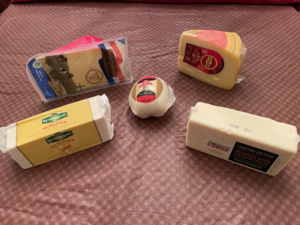
I cut the big blocks in half to give more surface area; the wedges I cut in half crosswise, since lengthwise would give too much surface area on the narrow end of the wedge.
I filled the water pan with chilled water plus snow from the deck. The cold water helps keep the smoker temperature low.
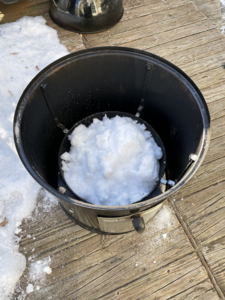
To hold the charcoal, I cut a mini-fire ring from a 1 lb steel coffee can. I lit just enough briquets to cover the bottom of a charcoal chimney, and when they were ready, I transferred 5 briquets to the fire ring, topping with some of the smaller wood chunks leftover from a bag of apple chunks.
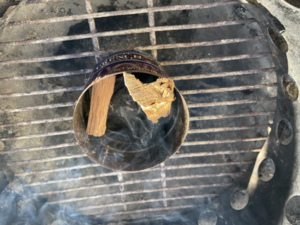
I assembled the smoker with all vents fully open. After 30 minutes the temperature had stabilized at 85F, and I added the grate holding the cheese blocks, and throttled all vents down to half, to keep internal temperatures low. .
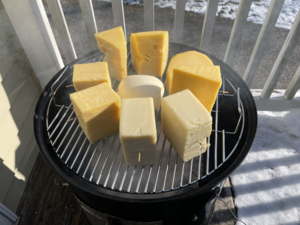
I needed to add briquets twice during the cook, about two hours after lighting the first batch, and again 3.5 hours after lighting. To keep temperatures low, I added only two or three briquets each time, with a few pecan chips on top. I found that the briquets wouldn’t light reliably when put on top of the few existing coals, but I had good results lighting them individually with a propane torch before adding them to the coffee can ring. Temperatures in the smoker stayed between 70F and 90F throughout the smoke, though it did require paying attention in order to keep the temperature stabilized below 90F.
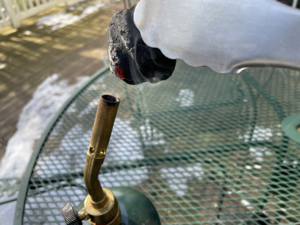
I took the mozarrella and the smaller chunk of each of the other cheeses off after 3 hours on smoke, and the larger blocks after 4 hours. All were wrapped tightly in plastic wrap and stored in the fridge.
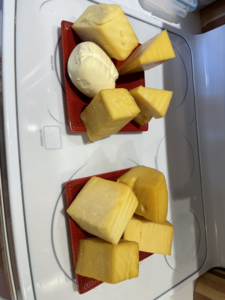
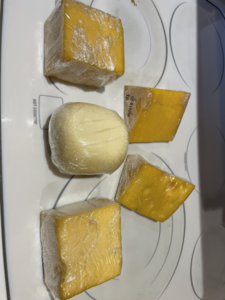
Tasting after two weeks showed the smoke flavor hadn’t yet penetrated far into the cheese. After four weeks, the result was much better, with little difference between the cheese smoked for three hours, and that smoked for four. We gave a lot of it away to neighbors, to rave reviews!
Nine pounds of cheese smoked with just 10 charcoal briquets!



